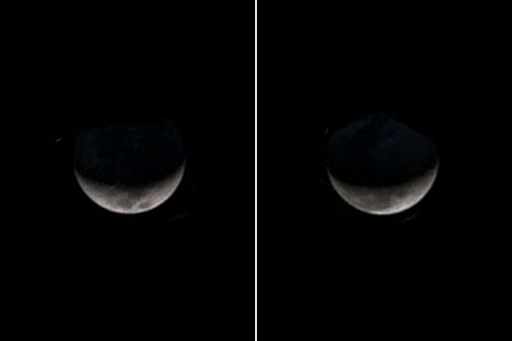2.12 The crescent Moon seen from the Equator
If phases are inverted in the Southern Hemisphere, compared to the Northern Hemisphere, how do you think waxing and waning crescents will look at the Equator?

At the Equator, a waxing crescent will form an ‘n’ shape as it rises, and a ‘u’ shape as it sets. A waning crescent will be the opposite, rising as a ‘u’, and setting as an ‘n’. However, ‘n’ shaped crescents are not visible at the Equator, because the Sun would always be above the horizon in this situation so the sunlight drowns them out. Another way to describe it is that after dark, the crescent Moon never looks unhappy seen from the Equator; it always looks like a smile.
